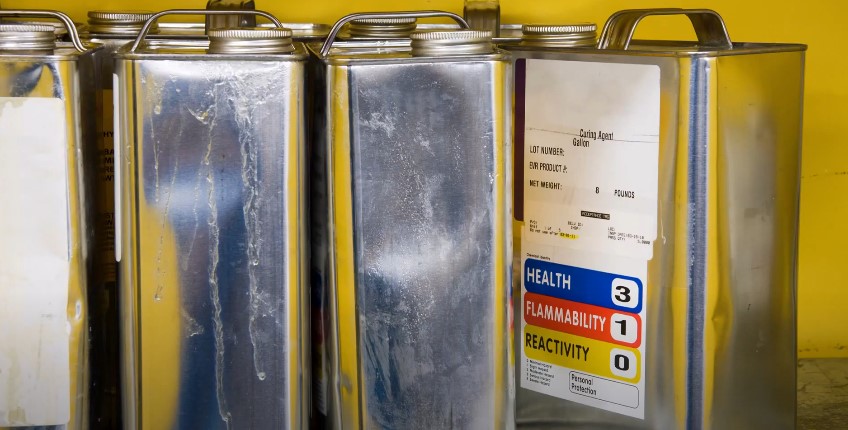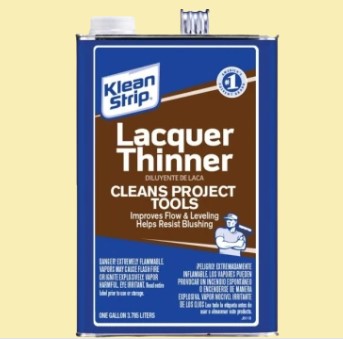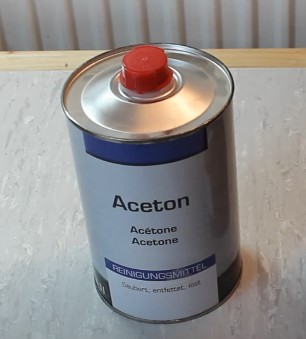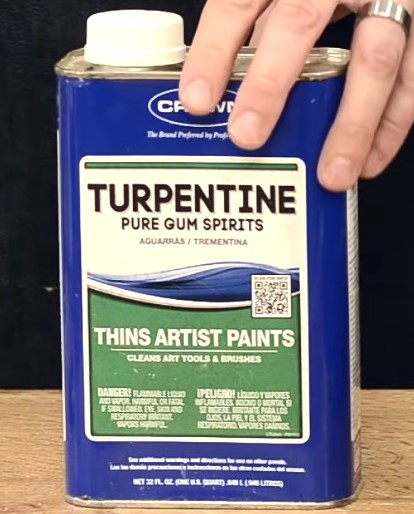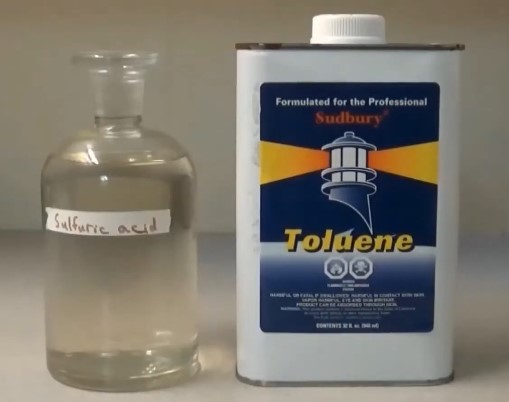You’re not alone if you’ve ever wondered whether paint thinners melt plastic. The question has been going around for years and has stumped many craft enthusiasts. And since the substance is used to dissolve paint, it makes sense that it would have some pretty strong corrosive properties.
Will paint thinner melt plastic? Plastic and thinner types will affect the answer. Most plastics aren’t damaged by mineral spirits, but soft plastics and styrofoams are. Acrylics will craze, soft plastics will dissolve, and Styrofoam will mush like popcorn in lacquer thinner. Formica and other phenolics are immune to such damages.
Let’s take a closer look at how different types of paint thinners affect plastic and find answers to the most frequently asked questions regarding the topic.
Contents
Different Types of Paint Thinners and Their Effects on Plastic
There are several types of paint thinners, and each one has a unique chemical composition that gives it different properties. Here’s a list of the most common paint thinners and their effects on plastic:
Paint Thinner Type 1: Mineral Spirits
Mineral spirits or white spirits are the most commonly used type of paint thinner. They’re made of petroleum distillates and have a moderate evaporation rate. This makes them ideal for cleaning paint brushes and other surfaces after painting.
What’s more, mineral spirits are mild and relatively safe to use. When it comes to plastic, mineral spirits won’t damage most types. But, they can alter soft plastics like polyethylene, polystyrene, and Styrofoam with scraping and corrosion.
Paint Thinner Type 2: Lacquer Thinner
Lacquer thinner is a strong solvent that’s made of petroleum distillates. It has a high evaporation rate, making it ideal for thinning lacquer-based paints. The substance is also great for cleaning surfaces and paint brushes.
However, it’s much more damaging to plastic than mineral spirits. On acrylic plastic, lacquer thinner will produce crazing, characterized by fine cracks. It can also melt soft plastics and Styrofoam. PVC may become brittle and slowly degrade.
Paint Thinner Type 3: Acetone
Acetone is a colorless, flammable solvent. It’s made of acetone cyanohydrin and has a very high evaporation rate. Acetone is commonly used for cleaning surfaces and thinning fiberglass resins.
When it comes to plastic, acetone is incredibly damaging. It will cause crazing on acrylics and similar plastics like polycarbonate. Acetone will also melt polystyrene and polypropylene. When exposed for longer, it can also soften or deform certain plastics like PVC.
Paint Thinner Type 4: Turpentine
Turpentine is a colorless, flammable solvent made from pine tree resin. It has a strong odor and is commonly used as a paint thinner and brush cleaner.
Turpentine is damaging to most plastics. Acrylics, polycarbonate, and polystyrene will all delaminate when exposed to turpentine. The solvent will also cause softening and deformities in stronger plastics like ABS.
Paint Thinner Type 5: Toluene
Toluene is a colorless, flammable solvent made from benzene and toluol. It has a sweet odor and is commonly used in paint thinners, adhesives, and cleaning agents.
Like turpentine, toluene is damaging to most plastics. Softer plastics like polystyrene will dissolve, while stronger plastics like PVC will become brittle and deform.
Among other types of paint thinners, Xylene is also frequently used. However, its effects on plastic are similar to those of toluene, so there’s no need to go into detail about it here. The same can be said of methylene chloride and MEK, which are also damaging to most plastics.
How to Avoid Plastic Damage from Paint Thinners
You may find yourself in a situation where you need to thin paint, but you don’t want to damage your plastic. This can happen if you thin too much, or use a paint thinner that is not appropriate for plastic. Here are some tips on how to avoid plastic damage from paint thinners:
Check for Compatibility
If the paint thinner can be used on other materials, such as wood, determine whether it will damage the plastic before using it on your project. As we’ve mentioned, acetone can dissolve several plastic materials.
If you are unsure about the compatibility of a paint thinner with your project, test it first with an inconspicuous area of your workpiece that is not likely to cause damage if damaged by mistake.
Use a Paint Thinner Approved for Plastic
There are paint thinners that are specifically designed for use with plastic. These products will not damage most types of plastic. Some examples of paint thinners approved for plastic include Mineral spirits and Naphtha.
If you cannot find a paint thinner specifically approved for plastic, you can try using distilled water. This is the safest option, but it may not be effective in all situations.
Use the Right Amount
When using a paint thinner, always use the minimum amount necessary. This will help to prevent damage to the plastic. Over time, the solvents in paint thinners can cause the plastic to weaken and become brittle.
Use Additives to Paint
Adding additives to paint before thinning helps create a thick film that is less likely to be damaged by paint thinners. This is especially helpful when using paint thinners that are not approved for plastic (although it may not always work).
Some examples of additives that can be added to paint include Silica gel, Talcum powder, and Glue.
Follow the Instructions
Be sure to read and follow the instructions on the paint thinner label. This will help you to avoid any potential damage to your project.
You May Also Read: Can You Thin Oil-Based Paint With Gasoline?
Frequently Asked Questions
Now that we’ve looked at the different types of paint thinners and their effects on plastic, let’s answer some common questions about the topic.
Why does plastic get affected by paint thinner?
It’s because of plastic’s molecular structure. Paint thinner molecules are small and can slip between the chains of atoms that make up plastic. This causes the chains to unravel and the plastic to weaken or dissolve.
Can all plastics be affected by paint thinner?
No, not all plastics can be altered by paint thinner. Some types of plastic, like polyethylene, are resistant to most solvents. However, other types of plastic, like polystyrene, are very susceptible to damage from the paint thinner.
What are the most aggressive paint thinners on plastic?
The most aggressive paint thinners are those that contain solvents like toluene, xylene, methylene chloride, and MEK. These solvents can damage most types of plastic.
Will paint thinner damage PVC?
PVC is a type of plastic that is resistant to most solvents, so regular paint thinners, like mineral spirit, will not damage it. However, some solvents, like acetone, can damage PVC. So, it’s important to check the label of the paint thinner to make sure it’s compatible with PVC before using it.
Where to store paint thinner if not in a plastic container?
Paint thinners should be stored in a cool, dry place away from heat or open flames. Metal containers or glass jars with tight-fitting lids are ideal for storing paint thinners.
Can you remove paint from plastic without a thinner?
Yes, there are some ways to remove paint from plastic without using a thinner. One way is to use a heat gun or hair dryer to heat the paint until it becomes soft. Then, you can scrape the paint off with a putty knife.
Another way is to use a solvent or paste specifically designed for removing paint from plastic.
What paint thinner melts plastic instantly?
Acetone is the paint thinner that melts plastic the quickest. It can dissolve Styrofoam, PVC, and other types of plastic.
Conclusion
So, there you have it- the answer to the prickly question: will paint thinner melt plastic? The answer is a resounding, maybe. It all depends on the type of plastic and the paint thinner you are using.
But regardless of the answer, it is always best to take precautions to avoid damaging your plastic project. Always test the paint thinner on an inconspicuous area of the plastic before using it on the entire project. And when in doubt, use distilled water or a paint thinner specifically approved for plastic.

